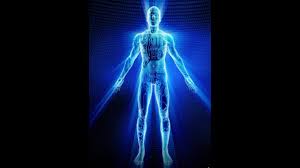The Electricity of the Heart

https://www.mindstrengthbalance.com/2016/09/28/body-electric-circuits-2/
Within the human body, there are multiple
fantastic electrical systems that keep us alive, well, and
thinking. Every time we think a thought, our brain is
sending from 5-50 messages per second from the billions of
neurons within it. Additionally, we don't often stop to
think about how our heart is maintaining a very important
rhythm that is executed with constant electrical pulsations.
But how is this electrical system created/maintained?

There is no definite "origin" of electricity,
as it has been observed and experimented with since the time
of the Romans. But the first actual electrical system comes
from our hero Michael Faraday, who created a small and
simple electrical generator. This generator functioned by
running a magnet through a coil of wires, which moved the
electrons within the wires creating current. While this
system was extremely simple, it's principles hold consistent
with how all electrical systems still work today.
https://www.rigb.org/our-history/iconic-objects/iconic-objects-list/faraday-generator
Pacemakers
https://www.nhlbi.nih.gov/health-topics/pacemakers